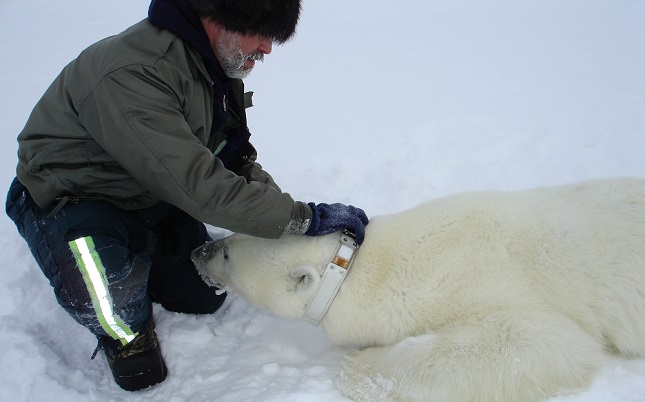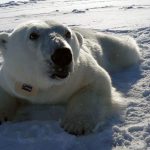← Back
Polar Bears and Climate Change

The polar bear is an iconic apex predator whose specialized adaptations for capturing seals from the surface of the sea ice has allowed them to flourish in the Arctic marine environment for at least 500,000 years. Polar bears occur only in northern hemisphere seas that are frozen for most of the year. Recent atmospheric warming has profoundly altered the global climate – but especially in northern latitudes as a result of “Arctic amplification” – and has caused reductions in sea ice.
Sea ice loss has displaced bears from optimal hunting habitat, altered the distribution of maternal denning, and increased their energetic costs. The USGS Alaska Science Center has used the Argos system to track and study polar bears for 30 years. George Durner of the USGS explains some of the way and their behavior has changed in response to the changing Arctic climate.
George Durner is a research zoologist with the US Geological Survey, Alaska Science Center polar bear research program. He entered this position in 1991 and currently works with a team of USGS scientists to identify and describe the mechanisms that drive the response of polar bears to a changing Arctic ecosys- tem.
His research focus is on polar bear habitat rela- tionships, particularly on how polar bears have and will respond to declines in sea ice. Hence, his research has been reliant on a 29 year history of polar bear location data gained through the Argos Data Collection and Location System. Much of his research results were used to inform the United States Secretary of the Inte- rior’s decision in 2008 to list polar bears as a threat- ened species under the Endangered Species Act.




